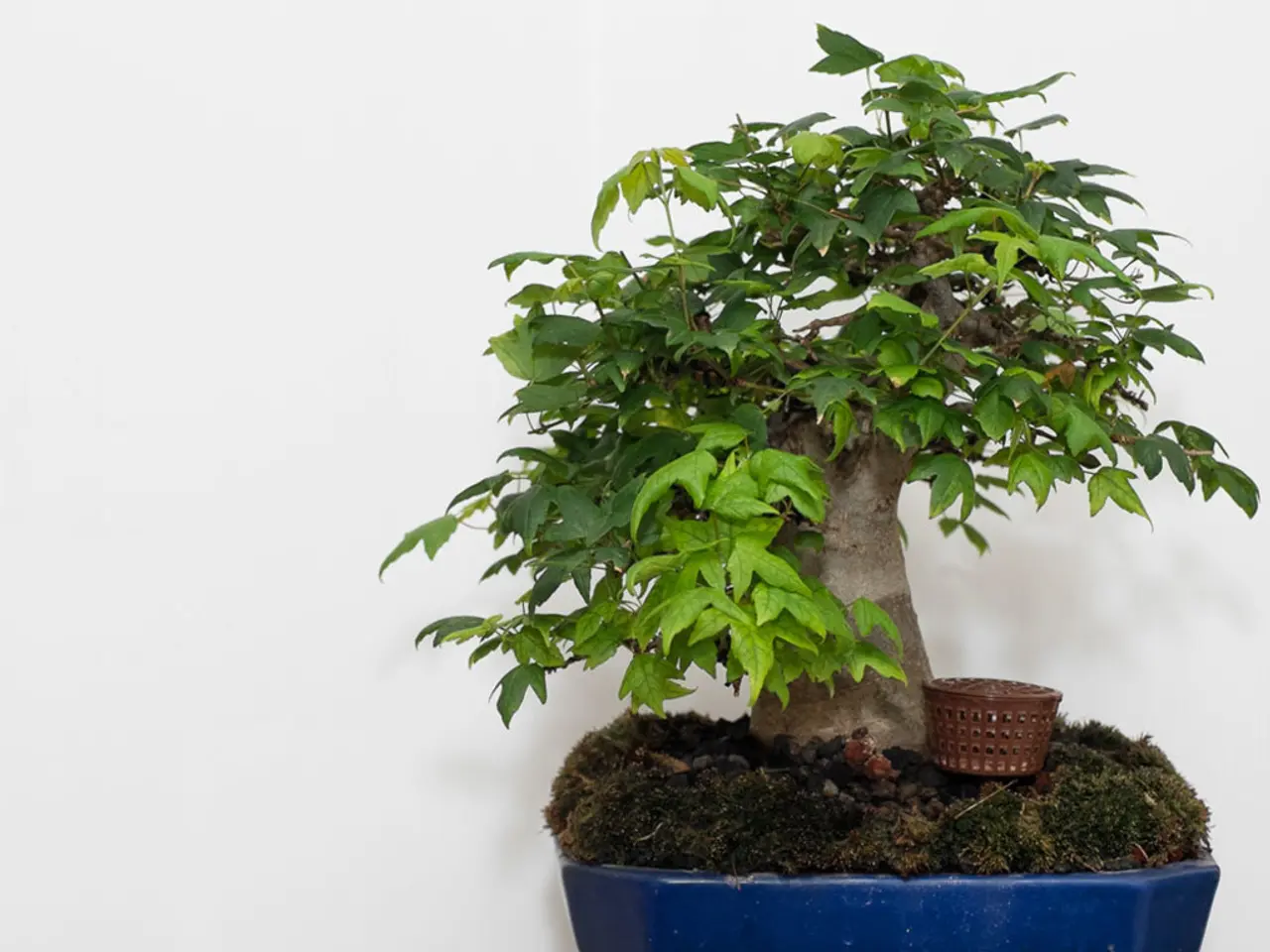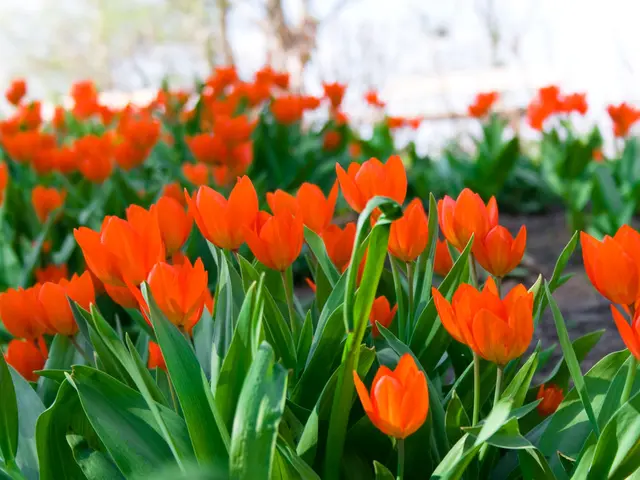Understanding Cannabis Bonsai and Its Cultivation Process
In the world of horticulture, a new and captivating art form has emerged: the Cannabis Bonsai. This unique method of growing miniature cannabis plants using bonsai techniques is gaining popularity worldwide, offering a beautiful and creative way to express love for cannabis.
To grow a thriving cannabis bonsai, it's essential to understand the plant's needs and adapt bonsai practices to suit its requirements. Here are some key techniques and steps to help you succeed:
1. Mainlining (Manifolding): This structured training technique involves topping and training the plant repeatedly to create a symmetrical, even canopy with balanced energy distribution to each bud site. This method, often used with photoperiod cannabis strains, helps maximise bud size and yield by creating equal light exposure and airflow across the plant.
2. Pruning and Training: Regular pruning of lower branches and leaves helps maintain the bonsai shape and improves airflow, reducing mold risk. Topping, fimming, and low-stress training (LST) are used to control the plant’s height and encourage lateral growth, creating the classic bonsai look with dense, well-spaced branches.
3. Turning and Light Management: Regularly rotating the plant ensures even light distribution, encouraging balanced growth and form. This technique prevents the plant from growing lopsided and helps maintain a rich, full canopy.
4. Growing Environment: Maintaining optimal conditions such as proper lighting, nutrients, irrigation, and temperature control is vital. Cannabis bonsai plants typically benefit from a stable environment that supports their reduced size but intensive training style. Indoor environments need careful management of light cycles, temperature, and humidity to prevent stress.
5. Patience and Observation: Cannabis bonsai growing requires patience, consistent training, and attentive care to balance the plant’s health with the aesthetic goal of miniature size. Constant monitoring for pest or mold issues and adjusting care accordingly is necessary to maintain both beauty and yield.
To deepen your knowledge, consider exploring detailed tutorials on mainlining cannabis and bonsai care videos that focus on turning, pruning, and root control. Combining these techniques with standard cannabis growing knowledge—especially around nutrients and environmental control—will help you successfully grow and maintain a cannabis bonsai plant.
Caring for a cannabis bonsai is not much different from caring for a regular cannabis plant. It's important to use a high-quality fertilizer specifically designed for cannabis plants, and to water the plant deeply, allowing the soil to dry out between waterings to prevent root rot. Over-watering can lead to root rot, which can kill the plant.
Using distilled water or reverse osmosis water when watering your cannabis bonsai is also recommended. Before planting, ensure the growing medium is well-watered and has good drainage. A pot with good drainage holes and a suitable growing medium, such as regular potting soil, hydroponic systems, or coco coir, is ideal.
Monitoring the growth of your plant and adjusting the lighting, temperature, and humidity levels accordingly is essential. The lighting requirements for a cannabis plant vary depending on the stage the plant is in. During the actively growing stage, the plant needs 13-14 hours of light every day. Some cannabis bonsai owners use grow lights to provide the plant with all the light it needs.
If you don't plan to use any type of artificial lighting, placing your plant where it can get late morning and early afternoon sun would be best. It's also easy to increase humidity levels near your cannabis bonsai by using a humidifier or a humidity tray. By keeping a close eye on your plant and the temperature/humidity levels around the plant, you should be able to determine if you need to adjust the temperature and humidity levels around your plant.
Pruning is an important part of caring for and shaping a cannabis bonsai, and helps keep the plant small and encourages new growth. During the inactive growing stage, light requirements for this plant go down to 10-12 hours per day.
Cannabis Bonsai plants can live for around three to five years with proper care. Some cannabis growers have been able to keep one plant alive for much longer than the normal cannabis plant life expectancy.
Cannabis Bonsai plants can be smelly due to their terpenes, which produce a strong smell. It's easy to alter the plant's stage simply by using lighting. You can alter these stages every month or so, but it's ideal to let the plant dictate its growth rate and adjust your lighting accordingly.
While cannabis bonsai is more popular in eastern parts of the world, it is gaining popularity in the western world. Some people enjoy the smell of cannabis plants, while others find it too strong. Regardless, the unique beauty and creative potential of cannabis bonsai make it an exciting and rewarding hobby for cannabis enthusiasts and bonsai lovers alike.
- To enhance your cannabis bonsai care, delve into resources such as tutorials on mainlining and bonsai-focused videos for insights on turning, pruning, and root control.
- Apart from bonsai care, maintaining a healthy cannabis bonsai involves selecting a high-quality fertilizer specifically designed for cannabis plants and ensuring proper watering practices to prevent root rot.
- When selecting a container for your cannabis bonsai, opt for one with good drainage holes and a suitable growing medium like regular potting soil, hydroponic systems, or coco coir.
- Monitoring the growth of your cannabis bonsai and adjusting the lighting, temperature, and humidity levels accordingly is crucial. In the actively growing stage, the plant needs 13-14 hours of light every day, while in the inactive growing stage, light requirements drop to 10-12 hours per day.





